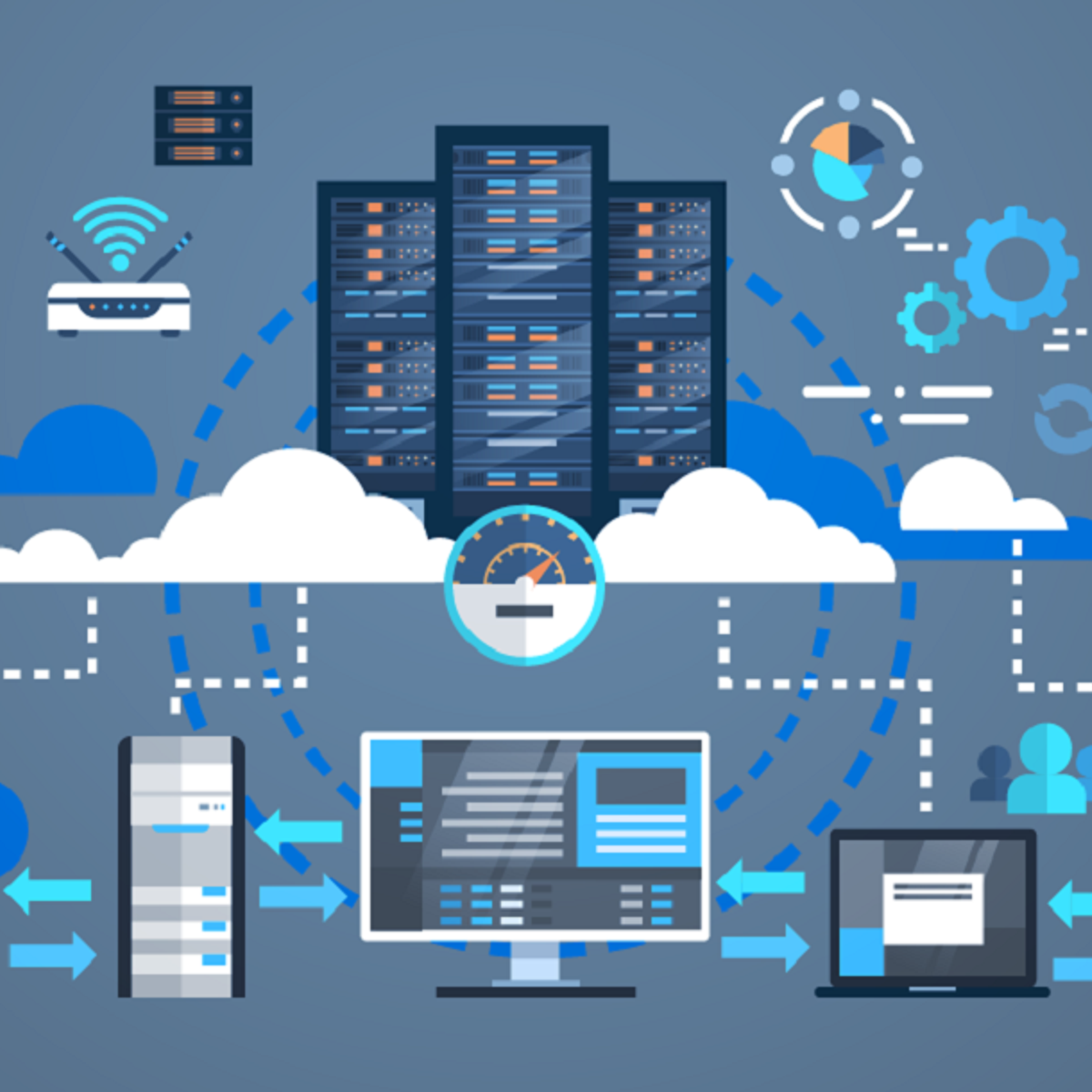Back to Courses









Computer Security And Networks Courses - Page 13
Showing results 121-130 of 277

Introduction to virtual machines in Microsoft Azure
By the end of this project, you will have successfully created an Azure account, logged into the Azure Portal and created, and configured a virtual machine. You will also have tested your deployment by connecting to the VM using Windows Remote Desktop.
You will build the Virtual machine through a series of tasks which include selecting the appropriate image for your VM and choosing the most appropriate options for disk storage and networking configuration. The skills learned in this guided project provide the foundation to understanding and implementing Infrastructure-as-a-Service (IaaS) solutions in Microsoft Azure.
If you enjoy this project, we'd recommend exploring the Microsoft Azure Fundamentals AZ-900 Exam Prep Specialization: https://www.coursera.org/specializations/microsoft-azure-fundamentals-az-900

4G Network Fundamentals
4G is the cutting-edge network technology that links millions of smartphones to the internet. But how does it actually work?
Ideal for network engineers, sales engineers, application developers, and many other telecoms pros, this course will help you to understand the technology behind the apps and devices we use every day.
You’ll get a solid overview of LTE/EPC (Long Term Evolution / Evolved Packet Core) 4G networks, how they work, how the network architecture is designed, and which protocols are used.
First, you’ll gain exposure to the global architecture of the network, how the radio interface works, and how security is guaranteed. Then you’ll dive into the operational side. What is a bearer? How is it quickly configured and released? How does 4G handle millions of terminals that are on the move all the time?
A certificate of completion is awarded by Coursera to learners who achieve a grade above 50%.
This course has received financial support from the Patrick & Lina Drahi Foundation.

Classical Cryptosystems and Core Concepts
Welcome to Introduction to Applied Cryptography. Cryptography is an essential component of cybersecurity. The need to protect sensitive information and ensure the integrity of industrial control processes has placed a premium on cybersecurity skills in today’s information technology market. Demand for cybersecurity jobs is expected to rise 6 million globally by 2019, with a projected shortfall of 1.5 million, according to Symantec, the world’s largest security software vendor. According to Forbes, the cybersecurity market is expected to grow from $75 billion in 2015 to $170 billion by 2020. In this specialization, you will learn basic security issues in computer communications, classical cryptographic algorithms, symmetric-key cryptography, public-key cryptography, authentication, and digital signatures. These topics should prove especially useful to you if you are new to cybersecurity Course 1, Classical Cryptosystems, introduces you to basic concepts and terminology related to cryptography and cryptanalysis. It is recommended that you have a basic knowledge of computer science and basic math skills such as algebra and probability.

Cybersecurity for Everyone
Cybersecurity affects everyone, including in the delivery of basic products and services. If you or your organization want to better understand how to address your cybersecurity, this is the course for you and your colleagues to take -- from seasoned professionals to your non-technical colleagues.
Your instructor, Dr. Charles Harry, has served on the front lines with the NSA (National Security Agency) and as an expert advising corporate and institutional leaders on managing cybersecurity risk. And he brings a rare and engaging perspective to help you learn cybersecurity from the ground up.
Cybersecurity for Everyone lays the groundwork to understand and explore the key issues facing policy makers attempting to manage the problem of cybersecurity, from its technical foundations to the domestic and international policy considerations surrounding governance, privacy, and risk management, to applications for achieving the goals of an enterprise, an institution, or a nation. This course is designed for students with some or no background in information technology, whether a novice or active in the cybersecurity field (engineers and computer scientists will learn the broader context and business aspects of cybersecurity), and will provide the principles to understand the current debates shaping a rapidly evolving security landscape.

The Business of Cybersecurity Capstone
This course intends to make the student familiar with information security management. When you have finished with this course you will know more about:
• Governance: including the mission, roles and responsibilities of the InfoSec governance function, and the strategic planning process and InfoSec’s role in the organization’s strategic planning effort.
• You will understand the various types of InfoSec policies and how effective information security policy is created and used.
• Risk management and the risk management process
• Certain laws and ethical issues impacting information security in the organization. And some common information security management practices such as benchmarking and performance measures.

How to Use RapidAPI
In this 1-hour long project-based course, you will learn what an API is and how to use one. You will learn this through the use of RapidAPI. RapidAPI is the world's largest API Marketplace. Developers use Rapid API to discover and connect to thousands of APIs. Using RapidAPI, developers can search and test the APIs, subscribe, and connect to the APIs.
Note: This course works best for learners who are based in the North American region. We’re currently working on providing the same experience in other regions.
Google Workspace Mail Management
Google Workspace Mail Management is the fourth course in the Google Workspace Administration series.
In this course you will learn how to protect your organization against spam, spoofing, phishing and malware attacks. You will configure email compliance and learn how to implement data loss prevention (DLP) for your organization. You will gain an understanding of the mail routing options available and learn how to whitelist and block senders. You will also become familiar with other mail options such as inbound and outbound gateways, 3rd party email archiving, and journaling to Vault.
Prerequisites
You should have completed the Introduction to Google Workspace Administration, Managing Google Workspace, and Google Workspace Security courses.

Personnel & Third-Party Security
In this course, you will learn all about the process of implementing effective education, training, and awareness programs. You will also study the role personnel security plays in protecting an organization’s assets, intellectual property, and physical assets. You will also be introduced to the steps required for effective Vendor Risk Management (VRM), including: due diligence, contracting, monitoring & accessing, and termination. Throughout the course, you will engage with current case studies that illustrate the key concepts in your lessons. You will also have the chance to submit assignments in which you will apply the material in a practical application.

Google Cloud Fundamentals for AWS Professionals
Google Cloud Fundamentals for AWS Professionals introduces important concepts and terminology for working with Google Cloud. Through videos and hands-on labs, this course presents and compares many of Google Cloud's computing and storage services, along with important resource and policy management tools.

Introduction to the Threat Intelligence Lifecycle
Today, we are faced with the increasing challenges of dealing with more aggressive and persistent threat actors, while being inundated with information, which is full of misinformation and false flags across multiple, unconnected systems. With information coming from such a wide variety of sources, how do you tell what is reliable and actionable, and what isn't?
The Threat Intelligence lifecycle is the planning, collecting, processing, analyzing, and disseminating of information to help mitigate potential attacks and harmful events by treat actors.
In this course, you will learn to:
- Describe the different phases of the Threat Intelligence lifecycle
- Explain the levels of information
- Identify different intelligence data sources
- Explain procedures and techniques used to process and analyze information
- Discuss distributing intelligence to different audiences
Popular Internships and Jobs by Categories
Browse
© 2024 BoostGrad | All rights reserved


